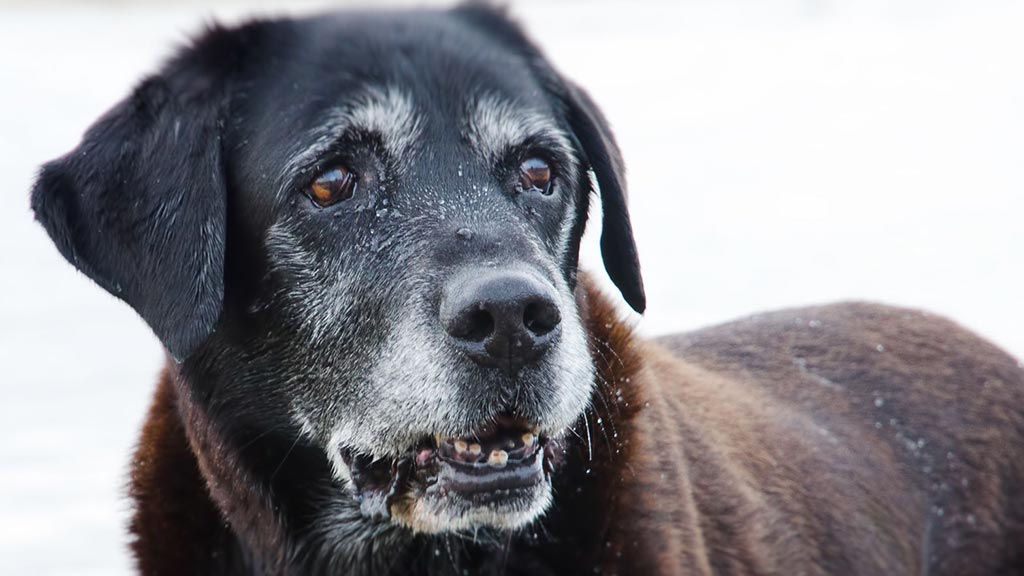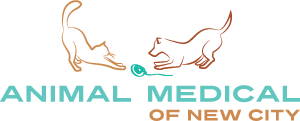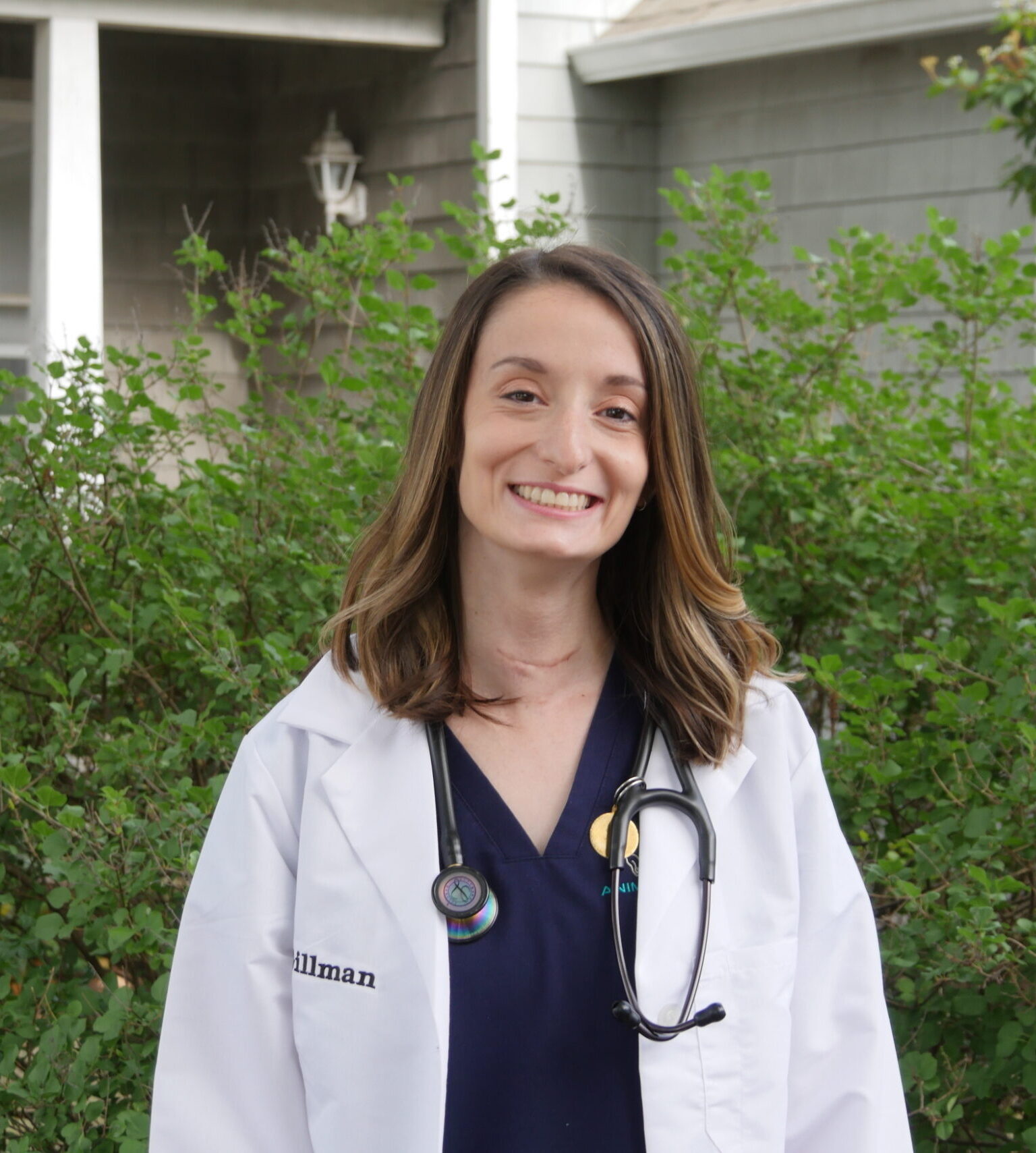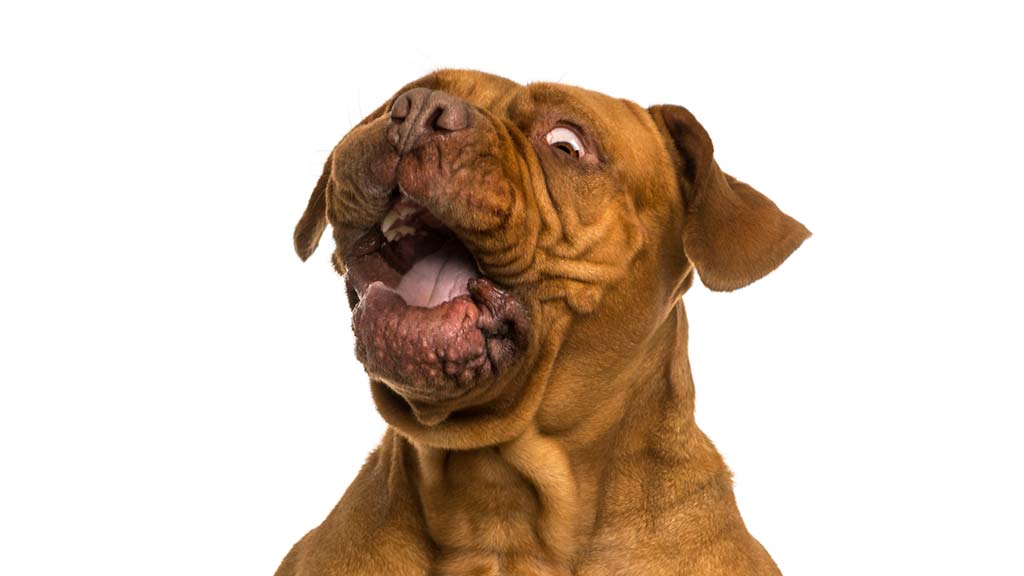
By examining your dog in the comfort of your home where he is most relaxed, you can get accurate, stress free information that is critical to a veterinarian’s understanding of your pet’s health. Learn these ten focus points of your dog’s body and what information is most important to a veterinarian, then prepare your dog for the most enjoyable, relaxed examination of his life!
3 Most Important Signs of Good Health
Doctor Howard Gittelman has been practicing veterinary medicine for 38 years and believes that there are overall three important signs of good health in dogs and cats.
Attitude
Any change in the way your pet interacts with you or other members of your family is important. Is your dog still eager to greet you at the door when you come home? Is he hiding or reluctant to move? Is there any change in the way he reacts to you opening a can or bag of food? House soiling, where previously there was none, is also very significant.
Change in Mobility
Limping or favoring a paw is an obvious sign that your pet needs medical attention, but keep an eye out for less obvious signs like a reluctance to jump onto furniture or your bed where before that wasn’t an issue. Look for signs of stiffness, a reluctance to shake his head, an inability to scratch his ears, or a hunched appearance. All are typically signs of pain that should be addressed.
Change In The Appearance Of The Coat
Dogs should have a healthy, somewhat shiny coat and little-to-no itchiness. Change in the appearance of your dog’s coat such as dullness where before there was luster, atypical hair loss, red skin, licking or chewing of the skin, or licking of the paws is all information that would be important for your veterinarian to know.
Oral Cavity
Veterinarians are trained to do a head-to-tail examination of your pet during every office visit, so we’re going to train you to observe your pet in the same way. Start with the oral cavity. Lift the side of your pet’s lip and observe the color of the gums. In the video below, we’ve embedded a great picture of what healthy gums look like. They should be coral colored and slippery to the touch, not tacky or pale. If you press on the gums, they should blanche momentarily, then quickly recover their pink color in less than 2 seconds. This is called the capillary refill time. The gum line around the teeth should not be red or inflamed and there should be no build up of tartar on the teeth or foul odor. Watch the video for more information on the oral cavity and how to keep the oral cavity clean and healthy or read more of the extensive information we have written on this topic.
Ears
Ears should feel supple. The skin on the inside should be white or light pink or dark if that is your pet’s normal skin pigmentation. There should no be signs of redness and the ear should not feel hot to the touch or be a source of pain for your pet. Covered with fur with some hair on the inside, ears are fertile ground for infection by bacteria or yeast, so keep an eye out for excessive pawing at the ears or head shaking that may indicate infection or discomfort. Wax build up and dirt increase the chances of infection, so if you see either, remove with a cotton ball or some soft gauze soaked in a veterinarian approved ear cleaner like Epi-Otic. Never place q-tips beyond where you can see them. Visit this link for a step-by-step description of how to clean your pet’s ears.
Eyes
Your pet’s eyes should be symmetrical with no excessive blinking or drooping of the eyelids, both of which could mean that the eye is painful. Some watery discharge and staining of the fur below the eye is normal for some pets, but changes to this typical pattern should be reported to your vet. Green or white discharge from the eye is not normal. The cornea should be clear and reflective and the pupil should be dark in appearance and responsive to changes in light. In older dogs, it is common for the lens behind the pupil to appear bluish, a relatively benign condition called lenticular sclerosis. The white of the eye should not appear injected or lined with red veins. The video below is very educational and includes a diagram showing the anatomy of the eye.
Lymph Nodes
Moving further down the head of the pet, you can start to palpate your pet’s lymph nodes. Your dog’s body has thousands of lymph nodes, but they are especially easy to palpate in three areas: along the neck, on the top of the shoulder blade, and at the back of the knee. Practice feeling for these or ask us to help you locate them the next time you are at our practice. Lymph nodes can be palpated even when they are normal and feel like a flat almond or olive. Any changes in size are very important to report to us. The video below has an embedded guide showing you the location of the lymph nodes and how you can feel for them.
The Abdomen and Weight
Weight
Pet’s that are kept at the appropriate weight for their breed have been shown to live 20% longer. When you view your pet from above, the body shape should be an hourglass; it should widen at your pet’s chest, narrow in the groin region, and then widen again at the hips. If you are viewing your pet from the side, the chest should be lowest to the ground and then curve up towards the genital area. Review the video below to watch Dr. Gittelman access his pet’s weight and body conditioning score and talk more about weight management.
Palpating the Abdomen
In addition to looking at your pet’s abdomen, you should feel it. Cup your dog’s abdomen in your hand and feel it as though you are holding the bottom of a purse and you are trying to feel through the sides of it for what the contents inside might be. Be gentle. You should not be able to feel anything hard, hear excessive gurgling, or feel anything like fluid build up. Watch your pet’s face as you do this and take notice if it appears that your gentle palpation is causing him or her pain.
Bloating of any kind is not normal and should be addressed promptly by a veterinarian.
The Rear End Of Your Pet
As you near the end (literally) of your pet’s physical examination, lift up his tail and take note of what you see. Learn what your dog’s anus looks like when he is healthy. Take note that there isn’t any stool on the fur and be conscious of whether or not your pet has been scooting or licking, frequently a sign of itchiness or pain. The anal sacs are located just inside the anus, embedded within the sphincter on the lower right and left hand side. Anal sacs contain a foul smelling fluid that serves as a scent marker. They should discharge on their own each time a pet passes a stool. It is not uncommon for pets to experience issues from time-to-time with their anal sacs. Allow a veterinarian to address any signs that your pet’s rear is causing him discomfort.
While you are back here, note the positioning of the tail, often an indicator if the pet is experiencing any hindquarter pain.
Evaluating Lameness and Range of Motion
We already covered how important it is to take changes in activity levels and motion seriously. Now, let’s review your pet’s range of motion more closely. Starting with the feet, examine your pet’s toes and the pads on the underside of the foot. Dogs typically do not like their feet touched, so if he pulls away, don’t assume that he is in pain. The more you practice examining your pet, the more he’ll get used to things and you will learn what is a normal or abnormal response from him.
Temperature, Pulse and Respiration
Veterinary professionals refer to temperature, pulse and respiration by the acronym TPR. Knowing your pet’s normal, at home TPR is great information for your veterinarian, especially if she is trying to diagnose a medical problem. Here is how to measure each.
Temperature
Measure your dog’s at-rest rectal temperature using a digital thermometer with a flexible tip Normal temperature for a dog or cat is 100.5°-102.5° F.
Heart Rate
Heart rate can be directly assessed by placing your hand on your pet’s chest, counting the number of beats in a 15 second interval, and multiplying by 4. You can also watch the video below to learn how to access heart rate by feeling your pet’s pulses and matching them against the beats you are feeling in the chest. It is normal for dogs’ hearts to beat arrhythmically, a condition we call respiratory sinus arrhythmia. Normal heart rate in a dog depends on the size of the pet with puppies and small dogs having higher heart rates than large dogs. Normal heart rate is usually 60-120 beats per minute.
Respiratory Rate
Measure respiratory rate when your pet is resting. Count the number of inhalations your dog takes in a 15 second period of time and multiplying by 4. The inhalation and exhalation should not appear to be labored or forced. Normal respiration rate for a dog is usually somewhere between 15-30 breaths per minute, but can be a bit higher at a veterinary office due to stress. A 20% increase in respiration rate over time is usually a sign of a serious medical condition that should be addressed by one of our doctors.
Skin
Lastly, let’s take a look at our pet’s skin, the largest organ of his body! We already observed the coat and its appearance, now let’s move in closer and look at the skin on the belly, the skin between the toes of your pet’s feet, and the pads. Thirty-five percent of all dogs suffer from allergies, usually announced by skin reddening and itchiness, so be on the look out for both.
Run a flea comb through the fur of your pet, especially just above the tail, and then look at anything that was captured in the tines of the comb. If your pet has fleas, it’s unlikely that you will see them, but you will probably see flea feces or flea dirt. Flea dirt looks like small specks of black pepper that smears a rust color if rubbed onto a wet paper towel.
If you feel lumps, note where they are and report them to one of our veterinarians the next time you are here for a visit. If the lumps are hard or if they are rapidly changing in size, call us for a more urgent visit.
Read More
Call Now
After-hours, use the contact form at the bottom of the page. We will reach out on the next business day.









